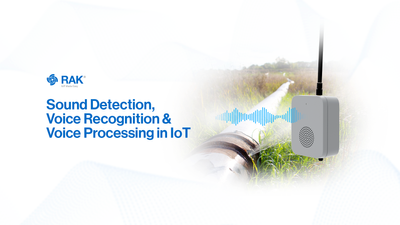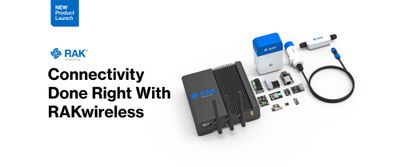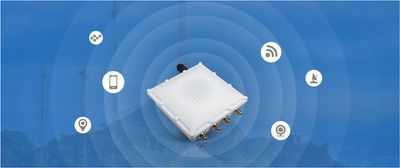IoT Audio Explained: Sound Detection, Voice Recognition, & Voice Processing
Audio features in IoT devices are key to making them more interactive and useful. Sound detection, voice recognition, and voice processing improve how these devices work and interact with us. These technologies are essential for today's IoT solutions, offering advanced ways for devices to understand and react to their surroundings.
For instance, sound detection helps devices like security systems recognize specific noises — from glass breaking to odd sounds that might indicate a machine is not working right. Voice recognition and processing make it easier for people to use devices by just speaking to them, making gadgets more accessible and enhancing the overall experience.
Let's take a closer look at these technologies' roles in IoT.
Understanding IoT Audio
IoT audio is technology that allows devices to listen and respond to sounds. This means gadgets can hear noises and talk back through speakers.
For example, IoT devices can hear sounds around them, from voice commands to noises in the environment. They can understand these sounds and respond accordingly. Also, with speakers, these devices can talk back to us or send us sound alerts and updates. This way of communicating helps with many jobs, from getting simple alerts to doing more advanced things using voice commands, making these devices easier and better to use.
Sound Detection in IoT
Sound detection involves IoT devices that have microphones to catch sounds and figure out patterns. For instance, security systems can send audio notifications when glass breaks to alert you, and factory devices can hear odd machine noises, signaling it's time for a check-up. This keeps everything running smoothly and safely.
The tech works by using smart methods and learning to ignore sounds that don't matter and focus on the important ones, like someone talking or glass breaking. However, getting this right can be tough. Different places have different kinds of noise, and IoT devices need to keep up despite not being super powerful computers. But, things are always getting better to make sound detection sharper and more reliable.
Even with these challenges, sound detection is making IoT devices smarter and more helpful. Looking ahead, we can expect even better things for how we use tech in keeping our homes safe and making industries more efficient.
Voice Recognition in IoT
Voice recognition technology has become a key part of making it easier and more accessible to use IoT devices. It enables machines to answer voice commands, making it much simpler for people to use different smart devices.
How Voice Recognition Enhances Smart Devices
In smart devices, voice recognition works by turning what you say into commands that the device can follow.
First, the device listens to your voice through microphones and changes the sound into digital information. Then, it looks at what you said by comparing it to a list of known words and commands. If it finds a match, the device does what you asked it to do.
Real-World Examples of Voice Recognition
The application of voice recognition spans numerous devices and sectors:
- Virtual Assistants: Smart speakers come with virtual assistants that can do various tasks like playing music or setting reminders just by listening to what you say.
- Voice-Activated Home Automation: Many smart home devices now offer voice control for lights, thermostats, and even cooking appliances, providing a hands-free way to manage the home environment. Check this video on how to build a voice-controlled lamp using WisBlock Audio.
- Accessibility Devices: For people who have trouble moving or seeing, voice recognition technology makes it easier to use technology and do everyday tasks.
Challenges in Voice Recognition Technology
Even though it's advancing, voice recognition still has some points for improvement:
- Accents and Dialects: Different ways of saying words can cause confusion or make it hard for commands to be recognized.
- Background Noise: Noisy environments can make it hard for the device to correctly hear and understand voice commands.
- Privacy Concerns: The need for devices to constantly listen for commands raises questions about data security and user privacy.
Voice Processing in IoT
Voice processing in IoT devices does more than just recognize what you say. It's a smart feature that lets these devices not only understand simple instructions but also have more detailed conversations with users.
The Difference Between Voice Processing and Voice Recognition
Voice recognition focuses on correctly picking up words someone says. Voice processing, on the other hand, includes more technologies that help improve how clear and easy to understand these voice interactions are. This means making the sound better and making sure devices can still work well even when it's noisy or in difficult situations.
Key Components of Voice Processing
Three major components form the backbone of effective voice processing:
- Noise Cancellation: This technology helps block out extra noise, making sure the device can clearly hear the person speaking. It's really helpful in loud places where lots of different sounds can interfere with understanding the spoken commands.
- Echo Reduction: It works by reducing the echoes that occur when the microphone picks up audio from the speaker, which might bounce off walls or tables.
- Signal Enhancement: This involves amplifying and clarifying the voice signal itself. By improving the signal's clarity, voice processing technologies make it easier for IoT devices to understand and respond to user commands accurately.
The Impact of Advanced Voice Processing
Advanced voice processing makes voice-controlled IoT devices much easier to use. It helps the devices understand you clearly and accurately. This improvement means these devices can work well in many different places, like a loud factory or a quiet house, ensuring they always respond as expected.
Real-world Applications of IoT Audio
IoT audio technologies are being used in many areas, changing how we do things and provide services.
Smart Homes
In smart homes, gadgets you can talk to are getting more common and make life easier for people. Homeowners can just use their voice to turn lights on or off, change the temperature, and even use kitchen gadgets. This makes everything at home work together smoothly. Also, entertainment systems have gotten better, letting users find shows, change the volume, and switch apps just by speaking, without having to use a remote.
Healthcare
The healthcare field has made big improvements by using IoT audio technologies. Now, systems that keep an eye on patients can use sound and voice recognition to give medical staff instant updates and warnings, helping them act fast when needed. Also, devices designed to help people with disabilities have gotten better with voice commands. This allows these individuals to express what they need more clearly and become more independent.
Industrial Automation
In industrial places, using sound to figure out when machines need fixing is really important for keeping things running smoothly. IoT devices that can listen for unusual noises help spot problems early. This means they can fix things before they break down, saving money and keeping machines working longer. This makes production more dependable and efficient.
Security
Audio surveillance systems have changed the way we keep places safe, both in public and private areas. These systems can pick up and process sounds, helping to spot possible dangers like someone breaking in or someone in need of help.
This quick identification allows for a fast reaction. Because these systems can tell the difference between normal and suspicious noises, security teams can pay attention to the most important issues, making places safer for everyone.
Noise Monitoring
Cities around the world are dealing with more noise pollution, which affects people's health and the environment. IoT audio technology, which uses sound sensors to collect noise data, is a key tool in addressing this. It helps find where the noise is too loud and makes it easier for cities to control it.
According to a study on urban road traffic noise, there isn't much focus on monitoring noise, showing how important IoT is in filling this gap. These technologies allow for a deep look into different noises in cities, helping planners and researchers understand and manage noise better.
WisBlock Audio
WisBlock Audio is a big step forward in adding sound features to IoT devices. Created by the team at RAKwireless, it's a complete system designed to help professionals easily include audio in their projects.
The Foundation of WisBlock Audio
The WisBlock Audio system is built around the WisBlock Base. This is a flexible platform that works with many different audio parts, like sound cores, microphones, and speaker amplifiers. It provides power and can connect to batteries and solar panels. It also has special spots for coding and fixing bugs. The design is straightforward, making it easy for anyone to start creating projects with audio for IoT without a lot of hassle.
Features that Set Us Apart
WisBlock Audio distinguishes itself through several key features:
- Compact and Modular: Our system's plug-and-play nature enables rapid prototyping and iteration without the need for intricate soldering.
- Customizable Cores and Modules: Users can select from various processing cores and microphones to tailor the system to their project's needs.
- DSP-Based Audio Processing: For sophisticated audio analysis and manipulation, we offer DSP-based processing options.
- Voice Recognition Capabilities: With WisCore Voice Recognition, devices can understand and respond to verbal commands, enhancing user interaction.
Versatile Applications
The applications of WisBlock Audio span across diverse fields, demonstrating the versatility of our kits. These include:
- Environmental Monitoring: Leveraging bioacoustics to observe natural habitats or listening for specific noises indicating changes in environmental conditions.
- Industrial Safety: Detecting irregular sounds from machinery which may indicate malfunctions or safety hazards.
- Smart Home Devices: Enabling voice recognition for seamless control over home appliances and systems.
- Wildlife Control: Utilizing audio signals to manage wildlife presence around human habitation.
Join the Conversation
We're excited to learn how WisBlock Audio is changing your IoT projects. Share your experiences, what you've learned, or any questions you have with us, and join our community of creative thinkers.
To stay updated on the latest in IoT, follow our blog and sign up for our newsletter for all the news and info on IoT trends and technology.
Frequently Asked Questions
What are the limitations of voice recognition?
Voice recognition technology struggles with accurately understanding accents, dialects, and languages, leading to potential misinterpretations. Background noise can further reduce its effectiveness. Privacy concerns arise because these systems often store voice data, and users with speech difficulties might not find the technology easy to use.
What is the difference between voice recognition and voice biometrics?
Voice recognition technology understands spoken words, allowing you to talk to devices or turn speech into written text. Voice biometrics checks who you are by the way your voice sounds, using it to keep things secure. The former focuses on understanding speech, while the latter assesses individual voice prints for authentication purposes.
Can we use RAK devices for Sound Detection or Voice Recognition?
Yes, RAK devices can be equipped for sound detection or voice recognition tasks. These devices, with appropriate sensors and software, are capable of capturing audio inputs for processing and analysis. This makes them suitable for applications requiring the identification of sounds or the interpretation of spoken commands.
Can WisBlock Audio integrate with both digital and analog microphone modules?
Yes, WisBlock Audio can integrate with both digital and analog microphone modules. This flexibility allows for diverse applications in sound detection and voice recognition projects, catering to various requirements and specifications. It supports the use of multiple types of microphone technologies for versatile audio processing solutions.
Read more Decoding LoRa Technology: Understanding the Differences Between LoRaWAN®, LoRa P2P, and LoRa Mesh





